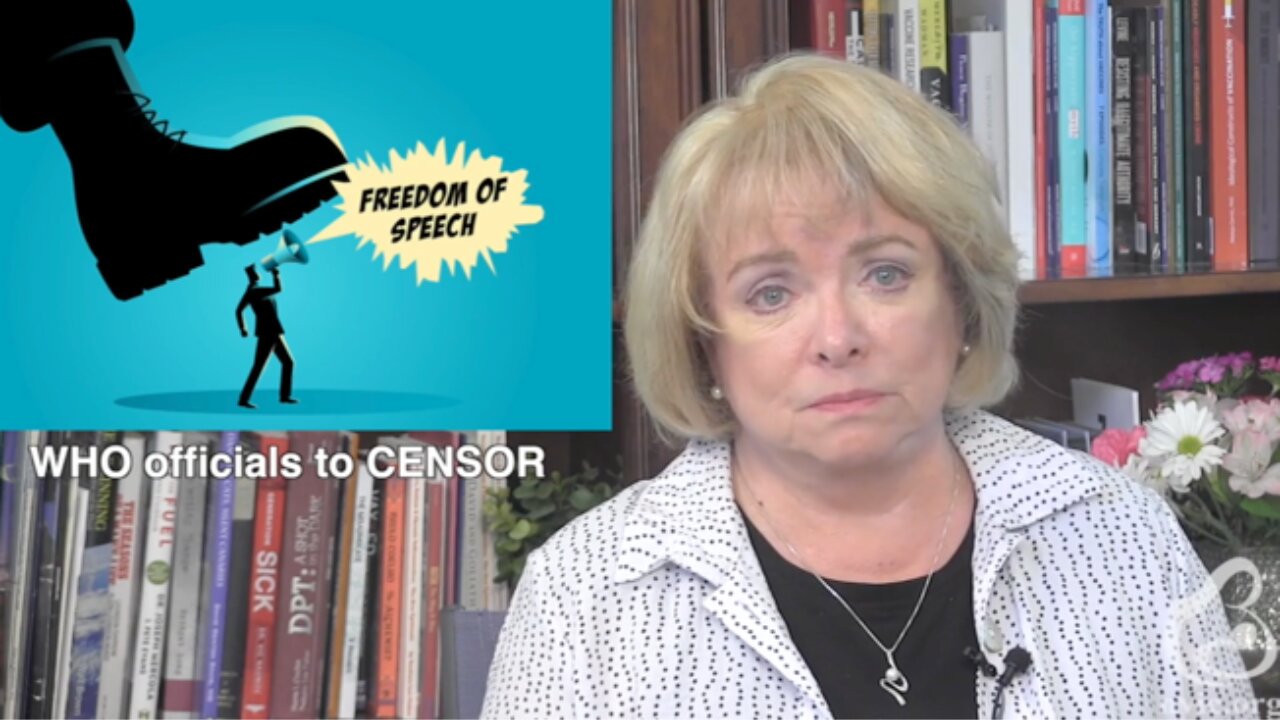The Centers for Disease Control and Prevention (CDC) states that, prior to the introduction of the first measles vaccine in the United States in 1963, it had been receiving nearly 500,000 reported cases of measles each year.1 2 3 4 That number is correct if you average the total number of measles cases reported during 1958-1962. The average comes to 503,282 cases annually.4 5 6
The picture looks a lot different, however, if you delete from the equation the year 1958. If you take the measles cases reported during 1959-1962, the annual average comes out to 438,3285 6—or almost 20,000 less than the measles cases reported to the CDC the year after the measles vaccine was introduced in the U.S. The CDC received 406,162 reported cases of measles in 1959; 441,703 in 1960; 423,919 in 1961; and 481,530 in 1962.5 6 It received 385,156 reported cases of measles in 1963 and 458,083 in 1964. This is worth noting because it is often pointed out that after the measles vaccine was introduced, the incidence of measles plummeted.
According to a 1992 paper written by Jacqueline Gindler, William Atkinson and Lauri Markowitz in the journal Epidemiologic Reviews:
Following the introduction and widespread use of measles vaccines, measles incidence declined dramatically.4
The impression given here is that the decline was sharp and immediate. Not quite. The dramatic decline in the number of reported measles cases occurred in 1965 when they dropped to 261,904, followed by 204, 136 in 1966; 62,705 in 1967; 22, 231 in 1968; and 25,826 in 1969.
“By 1978, the number of reported cases had decreased by almost 95 percent compared with the prevaccine era,” wrote Gindler, Atkinson and Markowitz.4
There is no question that 95 percent decrease represents a marked decline in reported cases of measles in the U.S. during that period. It is interesting, though, that the reported decline in measles cases correlates with other reported declines occurring in the U.S. population at that time, including a significant decline in birth rates between 1965-1969. For the first time since World War II ended in 1945, there were less than 20 live births per 1,000 people in the U.S. The birth period for the so-called “Baby Boomer” generation had come to an end. There were far fewer babies being born beginning in 1965 than in each of the previous 20 years.7 8
In 1965, there were a total of 3,760,358 live births in the U.S., compared to 4,027,490 in 1964. That’s 267,132 fewer American babies in that year’s birth cohort. If you compare 1965 to 1957, a year when the Baby Boomer birth rate hit its peak at 25.3 live births per 1,000 (for a total of 4,308,000 live births), the difference is 547,642 fewer American babies born in 1965. That peak birth rate in 1957 may have had something to do with the 763,094 reported cases of measles in 19585 6 7—the peak annual number for measles cases recorded in the 1950s.
Live births in the U.S. steadily declined after 1957 to 24.5 per 1,000 in 1958; 24.3 in 1959; 23.7 in 1960; 23.3 in 1961; 22.4 in 1962; 21.7 in 1963; 21.0 in 1964 and 19.4 in 1965. The rates kept dropping throughout the rest of the 1960s and the 1970s when they leveled off at 14.8 in both 1975 and 1976, and they have remained under 17 ever since—mostly under 16.
Is it possible that significant and consistent declines in U.S. birth rates after 1957 were at least a co-factor in the significant and consistent declines in reported measles cases beginning in 1965?
References:
2 CDC. Measles Data and Statistics. CDC.gov Feb. 16, 2018 (last updated).
3 CDC. Measles Data and Statistics. CDC.gov Feb. 16, 2018 (last updated).
4 Gindler JS, Atkinson WL, Markowitz LE. Update—The United States Measles Epidemic, 1980-1990. Epidemiologic Reviews 1992.
5 Cáceres M. The Story of Measles’ Sharp Decline. The Vaccine Reaction Apr. 12, 2016.
6 CDC. Summary of Notifiable Diseases, United States: 1989. Morbidity and Mortality Weekly Report Oct. 5, 1990; 38(54):56-58.
7 Live Births and Birth Rates, by Year. Infoplease.com.
8 Baby Boomer. Investopedia.com.














6 Responses
Is it possible that significant and consistent declines in U.S. birth rates after 1957 were at least a co-factor in the significant and consistent declines in reported measles cases beginning in 1965?
Or, after the vaccine was introduced the CDC began diagnosing measles differently. I have family in the medical field and I was told when pediatricians saw kids with symptoms and labs as measles they would diagnose the un-vaccinated kids with “measles,” but the vaccinated kids-same symptoms & labs would be diagnosed as “viral syndrome, NOS.” This was on the basis that they assumed the vaccinated kids could NOT possibly have the disease! So maybe measles cases didn’t decline as much as the CDC would like people to believe. After all, isn’t it the CDC that determines what is measles and what isn’t?
Also, according to the CDC’s Measles pink book:
-Fever is the most common adverse reaction following MMR vaccination. Although measles, mumps, and rubella vaccines may cause fever after vaccination, the measles component of MMR vaccine is most often associated with this adverse reaction. After MMR vaccination, 5% to 15% of susceptible persons develop a temperature of 103oF (39.4oC) or higher, usually occurring 7 to 12 days after vaccination and generally lasting 1 or 2 days. Most persons with fever are otherwise asymptomatic.
(A fever is a higher-than-normal body temperature and is a part of our body’s natural response to infection. -Cleveland Clinic.
This means the person is infected BUT only displaying a fever. If the person is infected they are contagious.)
-Measles- and rubella-containing vaccines, including MMR, may cause a transient rash. Rashes, usually appearing 7 to 10 days after MMR or measles vaccination, have been reported in approximately 5% of vaccinees.
(The rash is called Koplik spots and the CDC says this is an early sign of the measles infection. This person is thus contagious)
-Than there is the person who can get full blown measles from the vaccine:
https://www.vaccinationinformationnetwork.com/my-sons-vaccine-related-measles/ (image)
So maybe the reports of measles cases declining is sort of a slight of hand.
Just thinking.
Redpill – thanks for your interesting input!
Simple answer to this is no. The reason is that not only infants got vaccinated after that date but all children who had access to the vaccine and hadn’t gotten measles. So the vaccination rate exponentially increased during that time period. If it was due to the birth rate it would’ve correlates linearly with it but it doesn’t. A simple t test shows that it doesn’t correlate with any statistical significance. Whoever wrote that article needs to take a basic stats or regression analysis class.
Quit spreading anti vaccine nonsense. And the reason we do not have hundreds of thousands of annual cases of measles today is what?
Vaccines are causing outbreaks of measles. That is becoming more evident year after year because the VACCINE is failing, not that there is a failure to vaccinate. That’s if it ever was effective.
-Arch Intern Med. 1994 Aug 22;154(16):1815-20. Failure to reach the goal of measles elimination. Apparent paradox of measles infections in immunized persons. Poland GA1, Jacobson RM.
Conclusion: The apparent paradox is that as measles immunization rates rise to high levels in a population, measles becomes a disease of immunized persons.
-Paper: The Re-Emergence of Measles in Developed Countries: Time to Develop the Next-Generation Measles Vaccines?
“The measles vaccine has failed,” he explained two years ago in a prescient paper, “The re-emergence of measles in developed countries.” In that paper, he warned that due to factors that most haven’t noticed, measles has come back to be a serious public health threat. Poland sees the need for a major rethink, after concluding that the current measles vaccine is unlikely to ever live up to the job expected of it: “outbreaks are occurring even in highly developed countries where vaccine access, public health infrastructure, and health literacy are not significant issues. This is unexpected and a worrisome harbinger — measles outbreaks are occurring where they are least expected,”
– The Disney Measles outbreak occurred mostly in adults that had been vaccinated (vaccine are supposed to give lifelong immunity) and a study confirms that the MSM hasn’t reported on:
Journal of Clinical Microbiology, entitled, “Rapid Identification of Measles Virus Vaccine Genotype by Real-Time PCR,”
During the measles outbreak in California in 2015, a large number of suspected cases occurred in recent vaccinees (3). Of the 194 measles virus sequences obtained in the United States in 2015, 73 were identified as vaccine sequences (R. J. McNall, unpublished data). That’s 38%. https://jcm.asm.org/content/55/3/735
MEASLES OUTBREAKS IN HIGHLY VACCINATED POPULATIONS: -Outbreak of Measles Among Persons With Prior Evidence of Immunity, New York City, 2011. Oxford Journal.
Of 88 contacts, four secondary cases were confirmed that had either two doses of measles-containing vaccine or a past positive measles IgG antibody. All cases had laboratory confirmation of measles infection, clinical symptoms consistent with measles, and high avidity IgG antibody characteristic of a secondary immune response.” This report of measles transmission from a twice vaccinated individual. The clinical presentation and laboratory data of the index were typical of measles in a naïve individual. Secondary cases had robust anamnestic antibody responses. No tertiary cases occurred despite numerous contacts. What is stunning about this incident is individuals WITH PRIOR EVIDENCE OF MEASLES VACCINATION AND VACCINE IMMUNITY WERE BOTH CAPABLE OF BEING INFECTED AND INFECTING OTHERS WITH MEASLES (SECONDARY TRANMISSION).
100% vaccination rate will not stop outreaks and have been shown to increase outbreaks:
PLoS study: “Difficulties in eliminating measles and controlling rubella and mumps: a cross-sectional study of a first measles and rubella vaccination and a second measles, mumps, and rubella vaccination,” has brought to light the glaring ineffectiveness of two measles vaccines (measles–rubella (MR) or measles–mumps–rubella (MMR) ) in fulfilling their widely claimed promise of preventing outbreaks in highly vaccine compliant populations.
China has one of the most vaccination compliant populations in the world. In fact, measles vaccine is mandatory. So why have they had over 700 measles outbreaks from 2009 and 2012 alone? “The reported coverage of the measles-rubella (MR) or measles-mumps-rubella (MMR) vaccine is greater than 99.0% in Zhejiang province. However, the incidence of measles, mumps, and rubella remains high.”
New study in “Vaccine” from China: FAIL: 26% Contract Measles Despite 2 or More Measles-Containing Vaccines, New Chinese Study Finds-
An important new study published in the highly respected journal Vaccine titled, “Assessing measles vaccine failure in Tianjin, China,” brings back into the foreground the underreported paradox of measles outbreaks in some of the most highly vaccinated populations in the world: “Despite increasing global measles vaccination coverage, progress toward measles elimination has slowed in recent years. In China, children receive a measles-containing vaccine (MCV) at 8 months, 18– 24 months, and some urban areas offer a third dose at age 4–6 years. However, substantial measles cases in Tianjin, China, occur among individuals who have received multiple MCV doses.”
In fact, the study reveals that vaccination coverage is as high as 97% for the 1st and 2nd dose of measles-containing vaccine (MCV). The clear failure of the measles vaccine to generate herd immunity has caused major concern among public health officials in China. The study, therefore, sought to better characterize the nature of vaccine failure by exploring both the vaccination history of childhood measles cases and the differences in time-to-measles diagnosis based on vaccination history in Tianjin.
Hey Sam, stop repeating the pharma mantra that vaccines are safe since it’s been proven that they have never been tested for safety:
Whereas, on August 25, 2017 Informed Consent Action Network (ICAN) submitted a Freedom Of Information Act request (the FOUA Request) to the Department of Health And Human Services (HHS or the Department), which was assigned control number 2017-0119-FOIA-OS, that sought the following records:
Any and all reports transmitted to the Committee on Energy and commerce of the House of Representatives and the Committee on Labor and Human Resources of the Senate by the Secretary o HHS pursuant to 42 U.S. C. 300aa-27 ( c ).
WHEREAS, on April 12, 2018, ICAN filed a Complaint for Declaratory and Injunctive Relief in the United States District Court, Southern District of New York against HHS seeking records, if any, responsive to the FOIA Request:
WHEREAS, (IOS) maintains the official correspondence file of the Secretary of HHS, including reports to Congress by the Secretary of HHS, and therefore those files were most likely to contain records responsive to the FOUA Request;
WHEREAS, on June 27, 2018, HHS sent ICAN the following response to the FOIA Request;
The (Department)’s searches for the records did not locate and records responsive to your request. The Department of Health and Human Services (HHS) Immediate Office of the Secretary (IOS) conducted a thorough search of its document tracking systems. The Department also conducted a comprehensive review of all relevant indexes of HHS Secretarial Correspondence records maintained at Federal Records Center that remain in the custody of HHD. These searches did not locate record responsive to your request, or indications that records responsive to your request and in the custody of HHS are located at Federal Records Centers.
The remainder of the documents is legal-eze, signatures and the signature of the Hon. Jesse M. Furman, U.D.J.
The lawsuit forced HHS to either provide copies of its biennial vaccine safety reports to Congress or admit it never filed these reports. The result of the lawsuit is that HHS had to finally and shockingly admit that it never, not even once, submitted a single biennial report to Congress detailing the improvements in vaccine safety.
https://icandev.wpengine.com/wp-content/uploads/2019/08/Stipulated-Order-copy.pdf